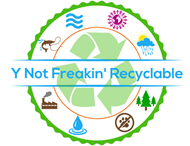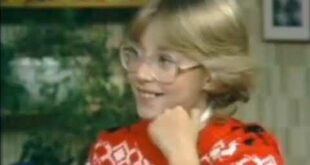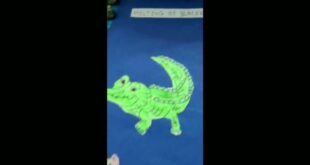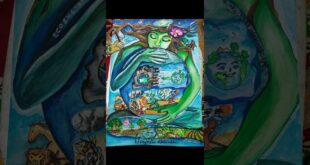[ad_1]
KANGAROO ISLAND, Australia – The bend in the eucalyptus branch seemed like a custom-home design feature given how perfectly it fit his tiny form. There in the crook of the tree was a koala, mildly burned and all alone.
His patch of wood, shared once by hundreds of other koalas, kangaroos and the occasional wombat, had scorched black in the recent wildfires. For the moment, he was safe there about 50 feet up. But there was no water or food; the eucalyptus leaves that koalas eat had vanished in the flames.
On the ground, there was only black earth and carcasses. Dozens of carcasses, babies and adults, teens and what looked like twins – all so burned even the carrion birds would not touch them.
The fires that roared through southeastern Australia for months razed hundreds of houses and killed more than 20 people, including several firefighters. A scar the size of Portugal now marks the land, a varying mix of tropical forest, eucalyptus and red-earth plains.
The largest in the nation’s history, the fires have come to be seen as a sign that Australia’s climate, despite words to the contrary from Prime Minister Scott Morrison, is warming up and drying out at a much faster rate than predicted even a few years ago.
There is no argument from the beloved fauna of this vast wild country. On Kangaroo Island, its sand and brush-covered bluffs visible just a few miles offshore from Adelaide, the fires burned without mercy, guided only by the stiff wind.
Georgie Dolphin, the program manager for animal welfare at Humane Society International, estimated that at least half the koala habitat was destroyed, killing the vast majority of the animals as the fire crackled though it.
Before the fire, an estimated 50,000 koalas lived on the island. Today, there are fewer than half that.
“And we really don’t have a full count,” said Adam Parascandola, a Washington, D.C., native and animal handler with the society for the past decade. “It could be much worse.”
Dolphin, Parascandola and a third member of their team, Patrick Brothers, were exploring a wedge of burned eucalyptus forest just on the outer edge of Flinders Chase, a grove still off-limits earlier last week because of the fire’s aftermath.
There were clues to track a troubled koala.
Among the dozens of dead kangaroos scattered across the burned-clean forest floor, small brown mounds appeared here and there. These were makeshift watering holes, seldom used by koalas. But without leaves in the trees, the surviving marsupials came down for the occasional moisture.
“When you see them on the ground, that is not normal behavior,” Dolphin said. “They look sad, defeated, but we’re happy with every one we save.”
Brothers and Parascandola managed to ease one koala away from a hole, encase him between two plastic laundry baskets and pad out his brief holding cell with towels. Docile and curious, the juvenile bear had burns on his nose and on the backs of his legs.
“These are wild animals that have never seen humans, and it makes them very stressed and sometimes difficult,” Parascandola said. “But if we do not take them out of here, they will simply starve to death.”
This one would get a stay at the local recovery center on the island, among the fortunate. A day earlier, the team found an adult kangaroo lying on its side, unmoving but alive. The team called for a veterinarian. The burns on the legs and bottoms of the kangaroo’s feet were too severe to heal, and on his side still, he was euthanized.
It is unclear here whether the eucalyptus forests will recover, almost certainly not to the same near-ubiquitous pre-fire extent. The island is lovely, just now so very full of death.
For the koalas, the recovery will be slow.
In recent years, there have been debates in Australia over whether to cull a koala population that has perhaps outgrown its habitat. Those plans never made it past public opinion, but for two years, hundreds of koalas have been put on a sterilization program.
Dolphin said the population will return more slowly as a result, and it is very hard to see the small, stricken bodies on the forest floor and know just how long it may be until the trees are full again. Not even the birds have returned.
A female koala lives an average of 12 years and in that time gives birth to five or six cubs. Her pregnancy lasts about 35 days.
The breeze gives a slight soundtrack in the branches. But everywhere else is quiet.
The team walks between the wide rows of burned trees with eyes up. That’s where the good news would be – a life, if it were to be at all. The team managed to save 30 koalas in the past week alone.
But it is the black aftermath of a fast, violent fire that draws the eye to what’s below – the scattering of small bodies, animals that failed to escape and now sprawl in horrible forms on the landscape. Some died in clusters, others all alone. They are everywhere.
There is something poignant about a small animal dying, and trying so hard not to.
It feels different than observing a big, powerful sea animal tangled in a rogue net or the prolonged death stumbles of the great land animals trying to bear up under the wounds from a hunter’s rifle.
Here in the scorched red soil of Kangaroo Island, it is the small death that is most excruciating. Along a tree line, a young koala, about the size of a newborn baby, made a small, brutal effort to live – a display of bravado. But his mind betrayed him and he succumbed to the inevitable loss of stamina.
This was just one koala. Facedown, the marsupial had dragged itself away from the fire with its small arms, his burned back legs giving out first. His face dropped to the ground, almost in rest, perhaps seeking a second breath.
But in the last couple of his living moments, in the tan ashy soil of western Kangaroo Island, he died, facedown, with a crushing mix of dignity and effort and, in the end, of a terrifying helplessness.
So have many others.
Source link
Y Not Freakin’ Recyclable Home
 Pollution Climate Change Holocene Deforestation Population Acidification Y Not Freakin' Recyclable
Pollution Climate Change Holocene Deforestation Population Acidification Y Not Freakin' Recyclable



